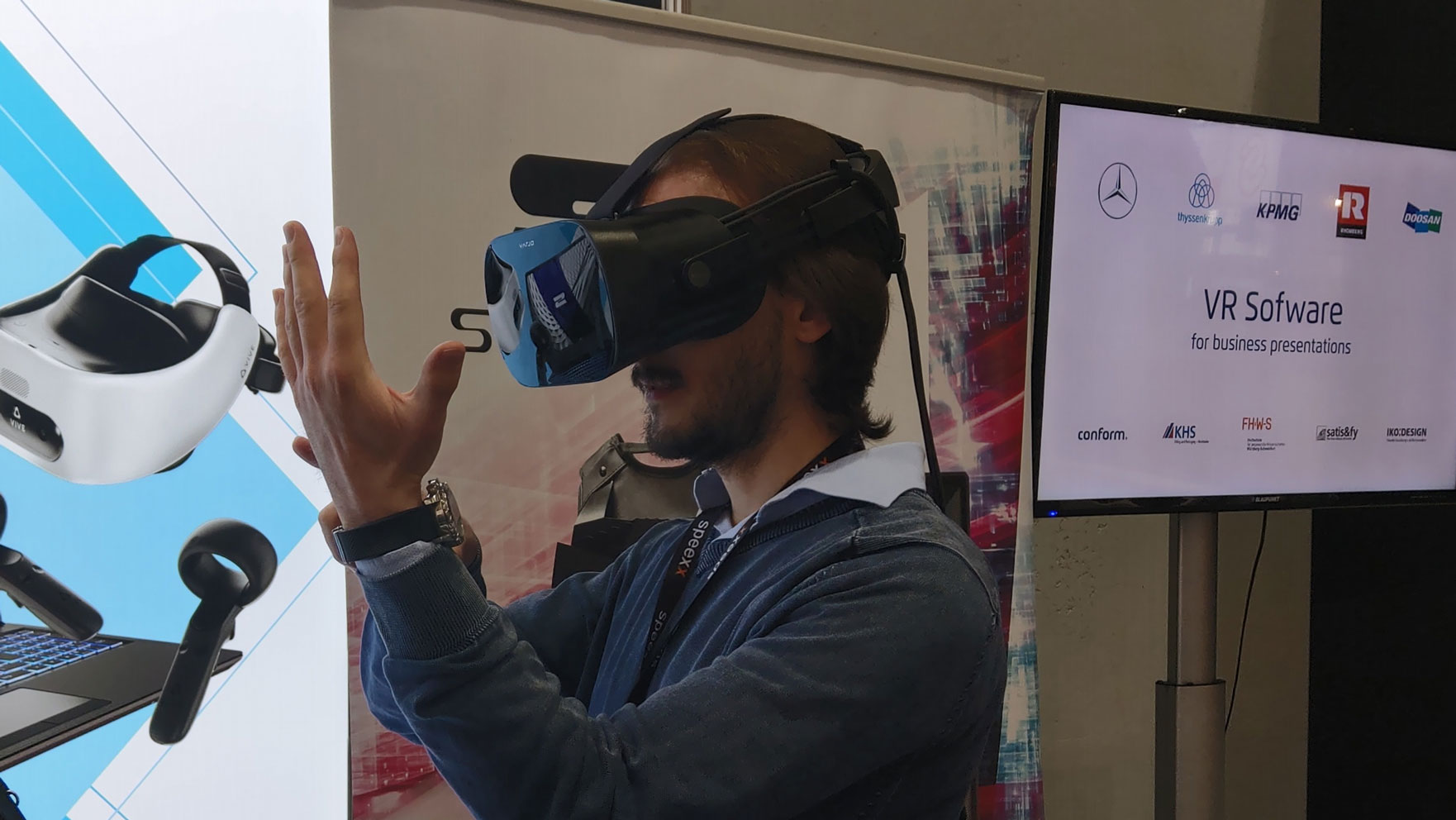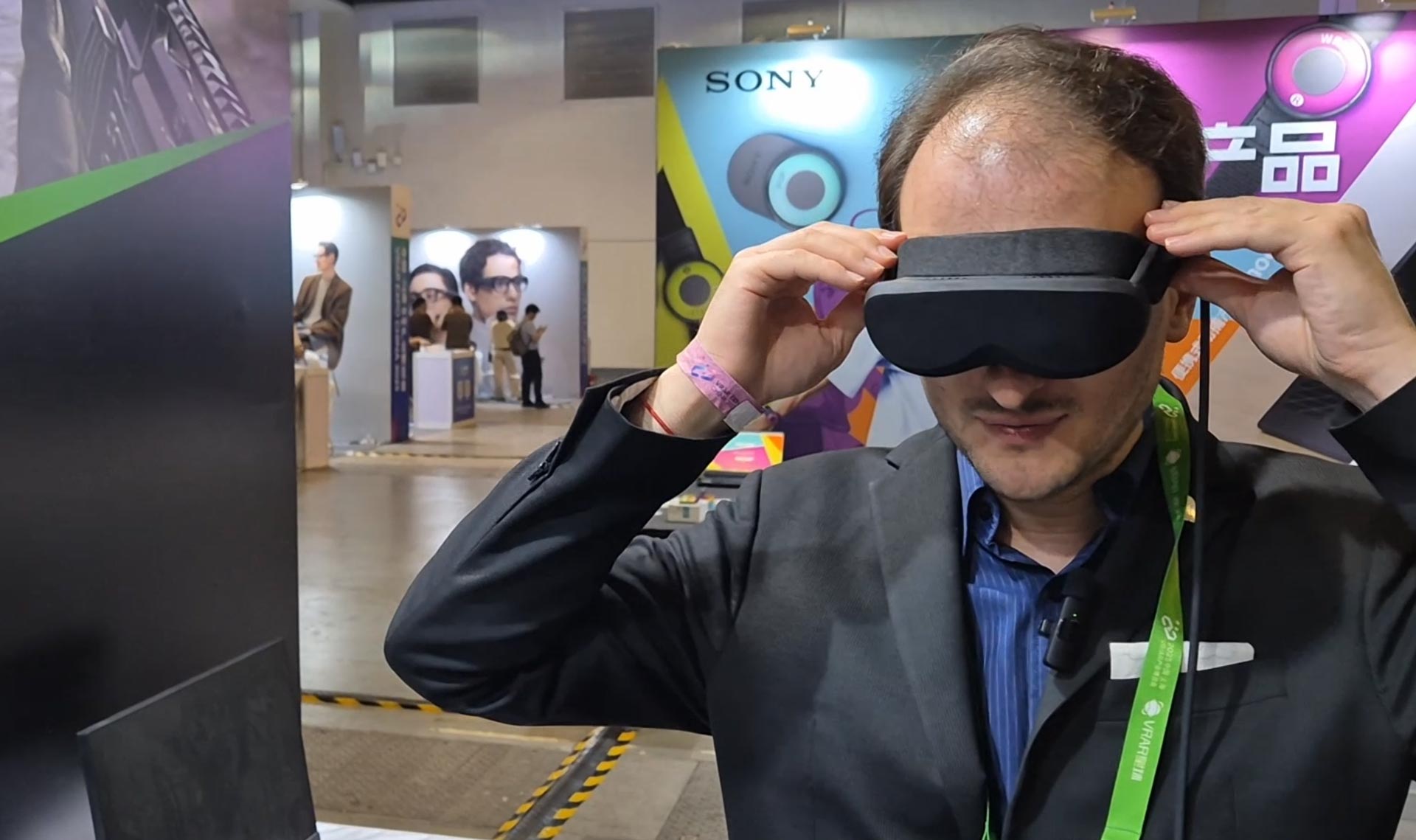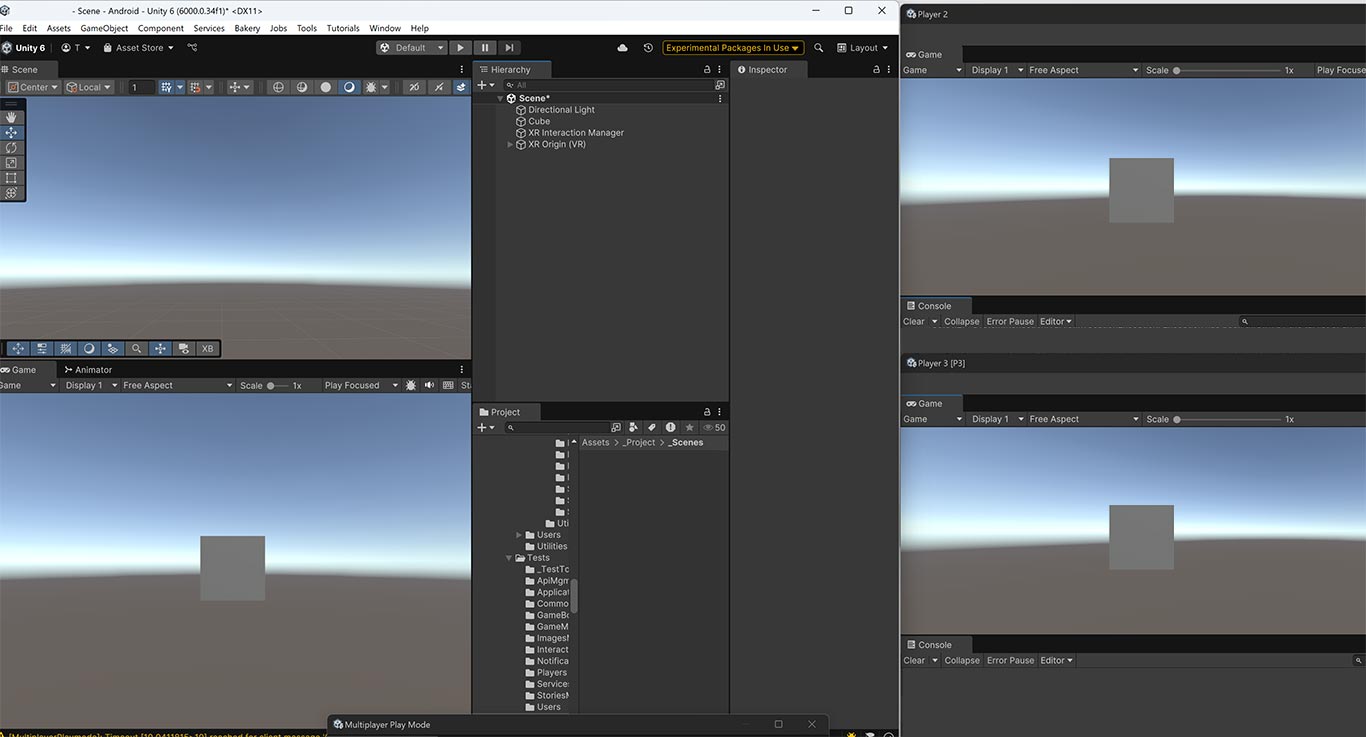Varjo VR-2 hands-on first impressions: perfect resolution, but…
The last two days I’ve been in Germany to attend the LearnTec event together with Massimiliano Ariani, the game designer of the fitness game HitMotion: Reloaded, to have a speech about the latest developments of Mobile AR. In the expo area, I’ve visited some booths, and then I had a vision that made my eyes bright: the Varjo VR-2, the headset providing full resolution vision to its users. I have heard a lot of talking about Varjo, I have even interviewed its CEO, but I have never tried its device. Being able to try it, thanks to Schenker, was an amazing opportunity, and I had to take it.
So, let me tell you how it was my experience with this headset that is worth $6000! It was completely different from how I expected it, so let me describe it to you.

Before starting…
Let me write a little caveat: this is a first-impression article written after having tried the Varjo VR-2 for some minutes, and can’t represent a full review on the device, that would require testing it for at least some hours.
What is Varjo?
For who doesn’t know what Varjo is, let me write a few lines to explain why it is so damn interesting. Varjo is a Finnish startup that is offering enterprise headsets that have full “retina vision”. That is, looking at the display, you don’t see the pixels anymore, but you see the virtual world as you would see the real one, without any screen door effect.
This is not obtained with a full super-high-resolution display (it would be too expensive and would require a PC by the NASA to do the rendering), but with the mix of two displays for each eye:
- One microdisplay with an incredibly high pixel density. This is the one providing the magic. Since it is very tiny, it just targets your fovea, that is the little region of your retina that sees in full resolution;
- One standard display that shows the virtual world, with a resolution similar to the one of the other headsets in the market. The visuals showcased by this display gets seen by all the other regions of the retina outside the fovea, that instead see more “blurred”.
The idea is mixing the results of these two displays so that the visuals have perfect resolution only where needed: it is the opposite approach of “foveated rendering”. At the moment, the “bionic vision display” is fixed in space, that is, you have this perfect illusion only if you look forward, but the idea is using some fancy system to make it move following your eyes, so that you have this perfect virtual vision wherever you are looking at. Varjo has various prototypes in this sense, but they aren’t working yet.
Specifications
Before telling you my impressions, let me tell you the specifications of this jewel:
- Display resolution: 1440×1600 per eye (standard screen) + 1920×1080 per eye (micro-display)
- Refresh-rate: 60/90Hz
- Field of view: 87°
- Tracking: SteamVR 2.0
- Integrated eye tracking (+automatic IPD adjustment)
- Integrated hands tracking (by Ultraleap)
Design

Let’s start my impressions from the design. The device looks nice especially if looked from the front (where it is quite reflective, but not as much as the VR-1), but it looks more standard when seen from the back or from two sides. I think the VR-1, with its fully-reflective faceplate, was more stylish, but this one is elegant as well.
The manufacturing is of very high quality, and it is clear that this product has been made with selected materials.
Comfort

Varjo features the classical mechanism to fit a headset to your head: a plastic headband that surrounds your head and that can be regulated by a knob that there is on the rear. A top headband ensures that the weight is evenly distributed across your head. On the rear part, the device features a foam cushion that makes it more comfortable on your nape.

I had a very good impression of the comfort of Varjo VR-2: in the few minutes I have used it, I found absolutely no comfort issues, and I loved having it on my head. Of course, a few minutes are not enough to evaluate comfort, but at least they can certify that the comfort is not bad at all.
Visuals
Let’s talk about Varjo’s specialty: the visuals. Well, I have come out a bit disappointed by them. Don’t misunderstand me: they aren’t bad, but all the reviews and opinions I read about it were so enthusiastic, that I set too high expectations that have been disappointed.
Let’s start from the basic things: the FOV of 87° is limiting, and I really felt the “seeing through a binocular” effect, especially because I use headsets with a larger field of views each day. Apart from that, I also spotted various distortions in the lenses, especially in the periphery of vision. While Volkmar, the guy demoing Varjo VR-2 to me, was loading the main application, I found myself in a home environment that was a grid of squares, so spotting imperfections was quite easy. Moving my head around, I could notice that the square grids distorted noticeably, not in the center of my vision, but on the periphery. It was quite noticeable and disturbed my experience in that scene. This effect was less evident in the subsequent application, though.
I also noticed something like two little white circles always present in the leftmost and rightmost edge of the image, probably due to some component next to the lenses (maybe for eye tracking?). I found that annoying as well.

When the main application loaded, I could finally appreciate the specialty of the house: the bionic retina display. I found myself in a 3D reconstruction of a supermarket, and I had around me products with all the tiny texts that are typical of product labels. And I could see them incredibly well.
But moving my head around, I could easily spot the “retina display” region. And that was an illusion-breaking moment. To make you understand the sensation: it is like having a very clean crystal glass window, where you have put a sticker in a region of 5cm x 2cm, and then have left the glass 2 weeks to take dust. After two weeks, you remove the sticker and then look through the glass, keeping the sticker region right in front of your eyes. The sticker region is still clean, and you see perfectly through it, while you see a bit more blurred through all the rest of the glass that has taken dust. Between the two regions, there is a clear edge. This is exactly the sensation of looking through Varjo display. You spot immediately that there are two screens.
But that said, after all these critics… when you look through that little high-resolution region, you can just think one work: W O W. It’s something that is not describable, it’s different from everything else you have ever tried in VR: you have to try it to understand what it means. Reading 1000 articles about it can’t prepare you to this experience. Because you have PERFECT VISION in VR. You see everything, with perfectly bright colors, with all details: you have finally your full vision in VR. It’s just inside that tiny area… but it’s enough to make your jaw drop. You can read every text, appreciate every detail of the world around you. It’s fantastic. If you have the possibility to try Varjo, do that for sure.
Eye-tracking
The demo featured eye-tracking, to measure how much time you were looking at items in a supermarket. Eye-tracking took a lot of time to calibrate for me, but it was quite fast for Max. I can’t evaluate its precision from this quick test, but I can say it was working quite well and followed my eyes very quickly.
Hands tracking

We all know the high-quality of Leap Motion (now Ultraleap) hands tracking, and it was enough to make me go through the whole demo without the use of any controllers. It’s not perfect, but it is very good, and for some basic interactions with menus, it was more than enough. I really appreciated it.
Final impressions
We’re still in the early days of Virtual Reality, and every headset of this generation features many problems. Varjo VR-2 is no exception to this rule: its optics could be improved, and its dual-screen approach still requires a lot of work to mix the visuals of the two displays in a believable way.
But at the same time, I appreciate a lot the fact that this startup is trying to do something very original, that is completely different from the competition. It is offering a complete headset, that has integrated hands-tracking and eye-tracking and that especially, even if just in a tiny portion of the screens, gives you real vision in the virtual world. And that’s something impressive.
I hope you liked these hands-on impressions of the Varjo VR-2. If it is the case, please share it on your social media channels by using the buttons here below or on the left!
Disclaimer: this blog contains advertisement and affiliate links to sustain itself. If you click on an affiliate link, I'll be very happy because I'll earn a small commission on your purchase. You can find my boring full disclosure here.



